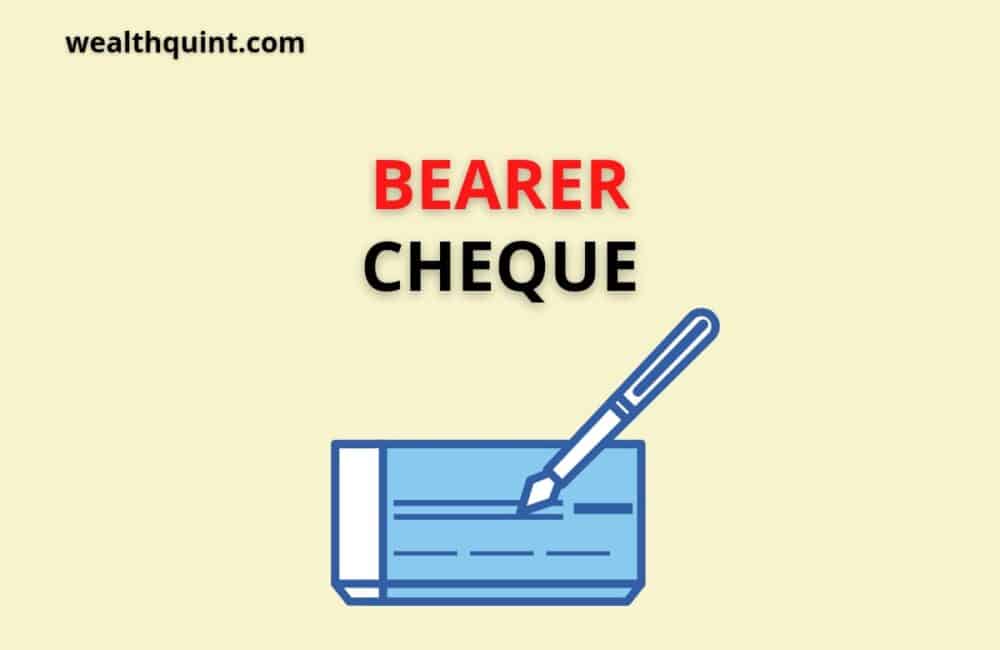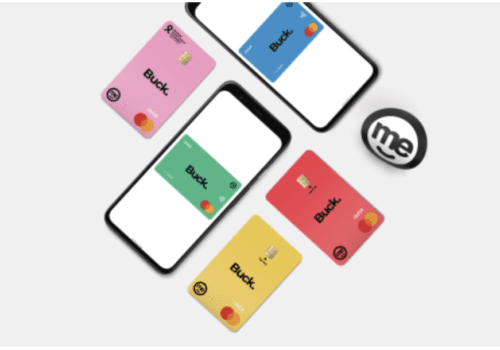It is well known that the cheque is a vital banking document used to do certain transactions. If you have any bank account, you might have received the checkbook with the account kit. But have you ever noticed what type of cheque you are using?
Is it bearer cheque, order cheque, or any other kind of cheque? So, if you are not much aware of it. You need not puzzled your mind. Just keep scrolling and read this entire article. This article is a comprehensive guide on bearer cheques.
By the end of this article, you will have all the information about the bearer cheque, like the features and advantages of using a bearer cheque? How to fill the bearer cheque? Which cheque is better among the bearer and order cheque? Is there any limitation on the transaction through bearer cheque?
But, before jumping deeper into it, it’s essential to know what precisely the bearer cheque is? What is the meaning of a bearer cheque?
Bearer Cheque Meaning
A bearer cheque is the type of cheque that any presenter can encash either on the name mentioned on it or not. The bank does not do much verification before clearing it. The endorsement is also not required in bearer types of cheques.
The bearer cheque can be quickly passed to another person, and he will easily encash it. Even if someone finds the filled bearer cheque, he/she can encash it. That’s why bearer cheques are considered quite risky.
Also Read: Account Payee Cheque
How To Write A Bearer Cheque?
The bearer cheque is written almost similar to the other types of cheque, but for better understanding, you can follow the steps given below that will help you fill the bearer cheque without any mistakes.
Simple steps to write Bearer Cheque:
- Fill the date at the top right side of the cheque; the format must be a month and then a year (DD/MM/YY).
- Write the payee’s name (Confirm the spelling twice) and write “Self” if you want to withdraw the amount yourself.
- You can draw a horizontal line beside the payee name to the last end of the cheque to avoid further editing the title or misuse.
- Mention the amount in words, let say, Five hundred rupees.
- Again, you can draw the line to the last end and the second line upto the rectangular box. It’s optional, not mandatory.
- Now, fill the amount in a numeric value like 500/, if you want to withdraw five hundred rupees or any certain amount that you wish to withdraw. You can write the amount just near the box so that no one can add any other numeric value.
- Draw a horizontal line after writing the amount so that no one can add any numeric value. It will end the scope of any further editing.
- Put your sign in the given space where either your name is printed or the word “signature.”
Now, you have successfully written a cheque that you can deposit by yourself or give it to anyone to visit the bank and encash it since it is a bearer cheque.
Bearer Cheque Withdrawal Rules
Since the bearer cheque is quite risky to carry and handle, the bank has made some policies and set of rules to make the transactions through bearer cheque safe and secure so that the misuse of bearer cheque could be avoided.
Some of the essential rules of bearer cheque are mentioned below that you must know if you are usually using it.
- Suppose someone presents a bearer cheque having mentioned an amount of more than fifty thousand rupees (5000 INR). The respective have the authority to ask for your legal documents like id proof for verification purposes.
It generally happens when the cheque presenter is not the account holder. He/she might be a bearer or carrier only. But, if the mentioned amount on the cheque is less than fifty thousand rupees, the bank usually doesn’t ask for any address or identity verification. Even if you are not the account holder of the account.
- The banking policymaker RBI (Reserve Bank of India) has made a mandatory rule and cautioned all the banks to insist on the KYC verification process before transactions through a bearer cheque.
- The bank doesn’t have the authority to ask the cheque presenter to call the account holder as there is no need for the presence of the account holder to be present at the time of transaction.
- If the account holder is presenting the cheque in the bank does not require to carry any id proof even if he wants to withdraw above fifty thousand rupees. The bank has the authority to proceed with the transaction process on the advice of the bank manager.
The bank manager makes certain inquiries of the account holder and allows the transaction procedures.
Also Read: What is Multi City Cheque?
Bearer Cheque Withdrawal Limit
There is no limit on bearer cheque withdrawal. However, the bank can ask you for an id card if you are not the account holder and want to withdraw an amount above fifty thousand rupees. The bank will do a certain verification and then, the bank proceeds for the transaction.
Bearer Cheque Payment Limit
No, there is no such limitation on bearer cheque payment. You can withdraw or pay any higher amount you can think of.
Who Can Withdraw The Bearer Cheque?
Anyone can withdraw by using the bearer cheque even if you are not the account holder. Still, you can move ahead if the respective banks encash the cheque. However, the bank may ask you for your ID proof only if you want to withdraw an amount above fifty thousand rupees.
What Is The Maximum Amount Of Bearer Cheque?
There is no such maximum amount limit on bearer cheques; you can easily withdraw the desired amount you wish to withdraw.
Can I Withdraw Cash From The Bearer Cheque?
Yes. You can withdraw cash from the bearer cheque. There are no certain rules and regulations that you can not withdraw cash using a bearer cheque. Instead, anyone can withdraw the cash. Only the presenter might have to carry his identity proof if the bank asks to show when the presenter is withdrawing the amount above fifty thousand rupees through bearer cheque.
Also Read: How to Fill Self Cheque?
What Are The Advantages Of A Bearer Cheque?
Following are the main advantages of a bearer cheque.
- Bearer cheque is an easy method to take payment at the bank counter.
- Negotiation of bearer cheque is quite more straightforward as the bearer cheque does not require any endorsement for negotiations.
- It is one of the easiest and convenient ways to make small transactions.
- Suppose you don’t own a bank account. Still, you can collect money from the bearer cheque without undoing any verification or signature.
- It can also be converted as an order cheque by cutting or drawing a horizontal line on the phrase “Or Bearer” mentioned on the top right side below the date.
Which One Is Better, Bearer Cheque Or Order Cheque?
The Bearer and order both types of the cheque have their significance and importance and relevance based on their unique features. If you are using a bearer cheque, you need not be present in the bank for transactions. You can send it through a bearer or carrier. He will be able to encash it.
This feature is its most significant advantage, and the exact part is one of the most important disadvantages. Because suppose you wrote a cheque and it got lost. Then anyone who finds it will be able to encash it easily by visiting the bank if the amount is not above fifty thousand.
So, if you want to be more explicit about it, keep scrolling and realize the differences between them.
Also Read: Crossing of Cheques & Its Types
Difference Between The Bearer Cheque And Order Cheque
Before understanding the difference between the bearer cheque and an order cheque, let’s understand the concept of an order cheque. Also, what exactly is the order cheque?
When you cross the word “Or Bearer” mentioned on the bearer cheque, it is automatically converted into an order cheque. An order cheque is the document or form of a cheque in which you order the bank to pay a certain amount mentioned on the order cheque. The prime motto of this order cheque is to ensure the payment is made to the right person.
So, you can decide which form of the cheque will be more convenient for you. As per the requirement, you can use both cheques. While keeping in mind that carrying a bearer cheque may be risky if it gets lost. On the other hand, you need not worry about such mishappening in the order cheque.
To Sup Up
You can use a bearer cheque for your small transactions but avoid using it if making a large payment or transaction as both types of cheques have their own importance and significance that the banking customers can enjoy accordingly.
Recommended:
Cheque Truncation System: CTS Cheque, Features, Benefits



